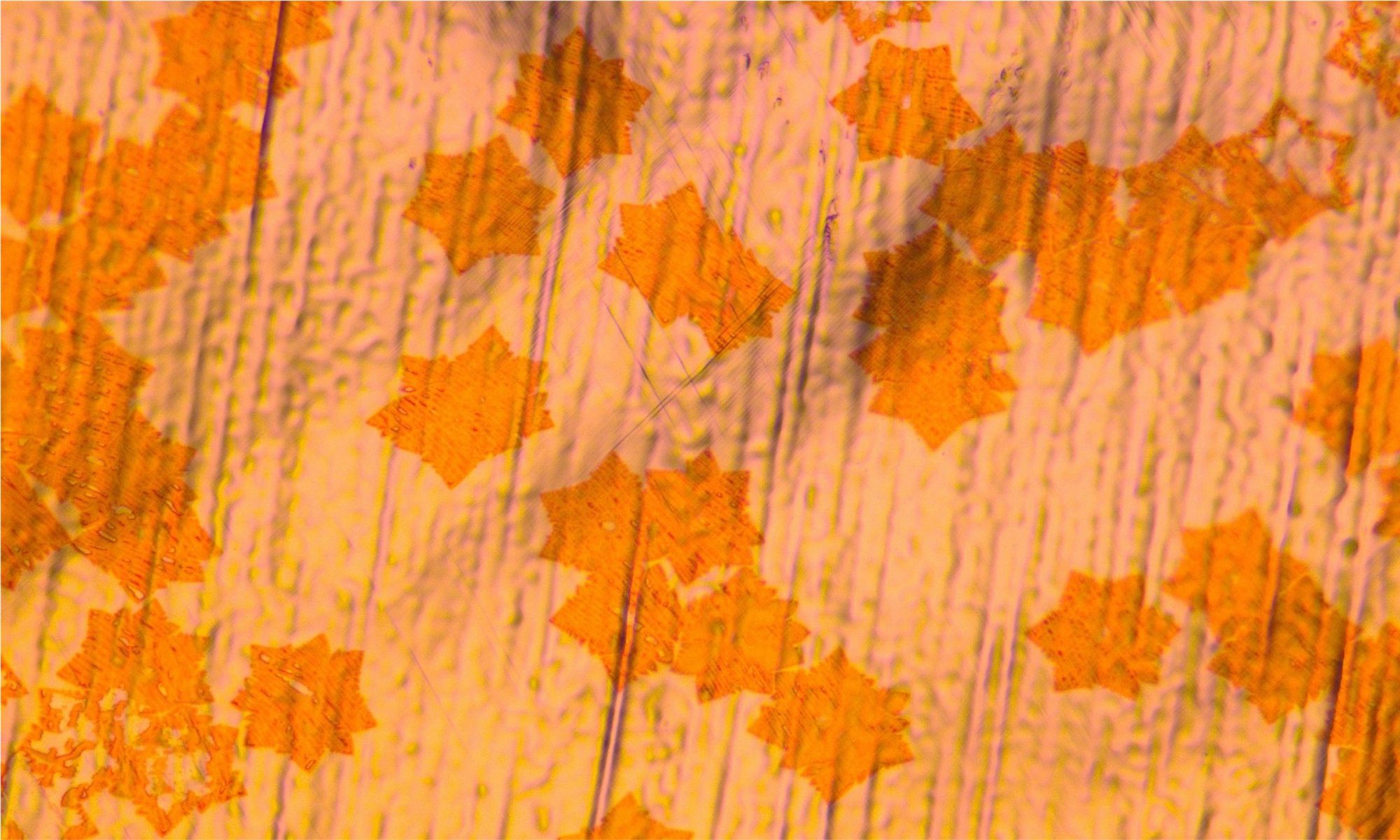In the newly funded project ACOMAT, AMO GmbH and partners will exploit the unique optoelectronic properties of two-dimensional materials for transforming CO2 into solar fuels.

Not only plants can use solar light to produce valuable chemicals from CO2 and water. With the right technology, CO2 can be stimulated to produce methane, methanol or formic acid in a process called photocatalysis, or artificial photosynthesis. While today the efficiency of photocatalysis is still limited, the dream of using CO2 as a resource is driving intense research and development worldwide.
To convert CO2 into so-called solar fuels (methane, methanol or formic acid), it is necessary to have it interacting with water vapor on the surface of a catalyzer where sufficiently many free electrons and holes are available to drive reduction and oxidation processes. And here is where the light comes into play. In fact, in certain materials such as Titanium Dioxide (TiO2), light absorption leads to the generation of electron-hole pairs with the right energies to drive the required chemical reactions. The problem is that this process needs ultra-violet light to be functioning, which represents only about 10% of the solar spectrum.
One way to increase the electron-hole production with solar light is to enhance the local intensity of the electromagnetic field by placing a grid of nanoantennas on the surface of TiO2. Up to now nanoantennas are typically metallic structures, but efficiency of the approach can be potentially largely improved by exploiting the exceptional optoelectronic properties of two-dimensional (2D) materials such as graphene and Molybdenum disulfide (MoS2). This is in essence the core idea of the project ACOMAT, where AMO GmbH is teaming up with NB Technologies GmbH (Bonn) and the Hydrogen and Fuel Cell Center ZBT GmbH (Duisburg) to develop an efficient photocatalyst using nanolithographically produced 2D materials.
“The idea of using 2D materials for the production of solar fuels from CO2 is not new”, says Benny Ku, PhD candidate at AMO GmbH and one of the initiators of the project. “In the literature, there are already preliminary works that indicate the potential of this approach. At AMO we are particularly well suited to try to transform these preliminary studies into a real technology, as we have a substantial expertize both in realizing nanostructures based on 2D materials, as well as on the development of nanoantennas for photocatalytic reactors for solar fuels production.”
The project ACOMAT is funded by the Ministry for the Environment, Agriculture, Nature Conservation and Consumer Protection of the State of North Rhine-Westphalia, through the Special Program for Environmental Economy. This program – established in fall 2020 within the framework of the “Corona-Aid” Programme – aims at sustaining small and medium enterprises to keep carrying on research and development in the field of the Green Economy despite the current pandemics, and at stimulating new start-ups.
“The current crisis shows very clearly the societal value of research, and the need of investing in technologies that today might seem very futuristic,” says Prof. Max Lemme, scientific director at AMO GmbH. “Without a decade of research on mRNA technology, we would not have some of the best vaccines available today. Without forward-looking research on renewable energy sources, we will not be able to reduce our dependence on fossil fuels and to fight climate change. Nanotechnology offers us powerful tools to explore new and unconventional ways of harvesting energy, and it might help us to find solutions to what is probably the biggest challenge of our century.”
